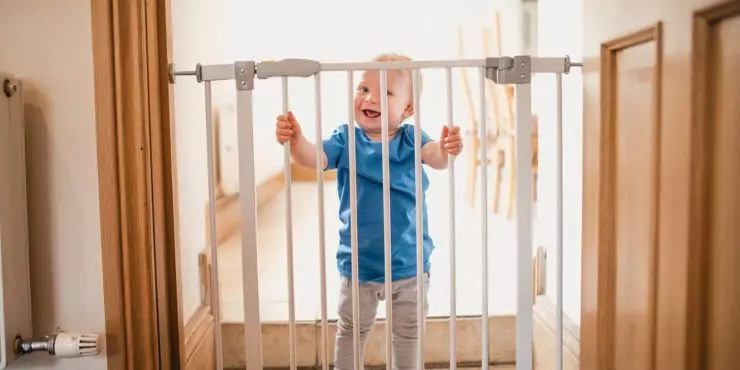
There is nothing more exciting than welcoming home your new baby. Not only has your family grown in size, but you now have many new decisions to make. Just one of these being, baby-proofing your house. As your baby grows and becomes more mobile, baby-proofing will become more necessary. Here are some tips for thinking about your baby’s safety in the home and how you can baby-proof your house.
Baby Safety - How to Baby-Proof Your Home
1. See the World from Their Perspective
Babies are naturally curious, and their explorations often involve reaching, grabbing, and pulling. Get down on your hands and knees to see your home from their viewpoint. Identify potential hazards like sharp edges, cords, and low-lying objects that could pose a danger.
2. Secure Furniture
Unstable furniture can lead to accidents. Ensure that bookshelves, dressers, and TVs are securely anchored to the wall. Avoid placing heavy objects on high surfaces where your baby could pull them down.
3. Cover Electrical Outlets
Babies are naturally drawn to outlets, but they can be hazardous. Use outlet covers or safety plugs to prevent accidental electrocution.
4. Cord Management
Keep cords for blinds, curtains, and electronics out of your baby's reach. Babies can become entangled, leading to serious accidents.
5. Lock Cabinets and Drawers
Cabinets and drawers within your baby's reach should be fitted with safety locks. This prevents them from accessing dangerous items like cleaning products, medications, or sharp objects.
6. Baby Gates
Install baby gates to restrict access to stairs, kitchens, and other potentially dangerous areas. Make sure the gates are properly installed and meet safety standards.
7. Soften Sharp Edges
Babies' heads are prone to bumps and bruises. Soften the edges of furniture with corner guards to reduce the risk of injury.
8. Choose Safe Toys
Opt for toys that are age-appropriate and free from small parts that could pose choking hazards. Regularly inspect toys for any signs of wear or damage.
9. Secure Windows
Ensure windows are not accessible to your baby. Keep them locked and install window guards to prevent falls.
10. Bathroom Safety
Store medications, cleaning products, and sharp objects out of reach. Use non-slip mats in the bathtub and place a lock on the toilet lid to prevent drowning hazards.
11. Crib Safety
Use a crib that meets safety standards and avoid soft bedding, pillows, and toys inside the crib. Babies should sleep on their backs in a crib with a firm mattress
12. Anchor Rugs and Carpets
Secure rugs and carpets to prevent slipping and tripping hazards as your baby begins to crawl and walk.
13. Temperature Control
Maintain a safe temperature in your home to prevent overheating or chilling. Use baby-safe space heaters and ensure water temperatures are safe for bathing.
14. Be Vigilant
No matter how well you've baby-proofed, always supervise your child and stay within arm's reach, especially during playtime.
Creating a safe home environment requires a combination of careful planning, attention to detail, and regular updates as your baby grows. By taking these precautions and thinking like a curious child, you can provide a nurturing and secure environment where your baby can thrive, explore, and develop their full potential.
Remember, each home is unique, so customize your baby-proofing strategy to fit your specific living space and the needs of your family. Your commitment to baby-proofing is an investment in your child's safety and well-being that will bring peace of mind for years to come.